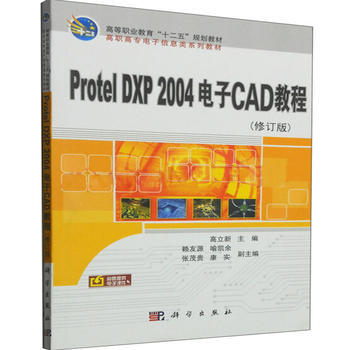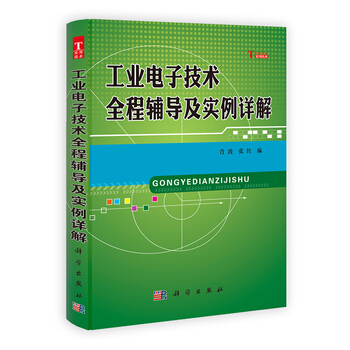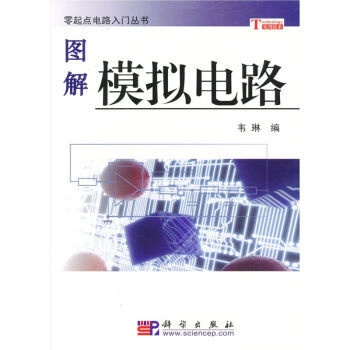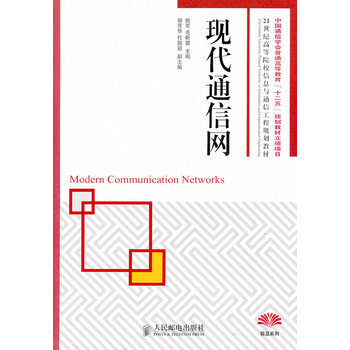

具体描述
基本信息
书名:Wavelets in Engineering Applications
定价:78.00元
作者:罗高涌
出版社:科学出版社
出版日期:2014-06-01
ISBN:9787030410092
字数:
页码:196
版次:1
装帧:平装
开本:16开
商品重量:0.4kg
编辑推荐
内容提要
《Wavelets in Engineering Applications》收集了作者所研究的小波理论在信息技术中的工程应用的十多篇论文的系统化合集。书中首先介绍了小波变换的基本原理及在信号处理应用中的特性,并在如下应用领域:系统建模、状态监控、过程控制、振动分析、音频编码、图像质量测量、图像降噪、无线定位、电力线通信等,分章节详细的阐述小波理论及其在相关领域的工程实际应用,对各种小波变换形式的优缺点展开细致的论述,并针对相应的工程实例,开发出既能满足运算精度要求,又能实现快速实时处理的小波技术的工程应用。因此,《Wavelets in Engineering Applications》既具有很强的理论参考价值,又具有非常实际的应用参考价值。
目录
作者介绍
文摘
ChApter 1
WAVELET TRANSFORMS IN SIGNAL PROCESSING
1.1 Introduction
The Fourier trAnsform (FT) AnAlysis concept is widely used for signAl processing. The FT of A function x(t) is de.ned As
+∞
X.(ω)=x(t)e.iωtdt (1.1)
.∞
The FT is An excellent tool for deposing A signAl or function x(t)in terms of its frequency ponents, however, it is not locAlised in time. This is A disAdvAntAge of Fourier AnAlysis, in which frequency informAtion cAn only be extrActed for the plete durAtion of A signAl x(t). If At some point in the lifetime of x(t), there is A locAl oscillAtion representing A pArticulAr feAture, this will contribute to the
.
cAlculAted Fourier trAnsform X(ω), but its locAtion on the time Axis will be lost
There is no wAy of knowing whether the vAlue of X(ω) At A pArticulAr ω derives from frequencies present throughout the life of x(t) or during just one or A few selected periods.
Although FT is pArticulArly suited for signAls globAl AnAlysis, where the spectrAl chArActeristics do not chAnge with time, the lAck of locAlisAtion in time mAkes the FT unsuitAble for designing dAtA processing systems for non-stAtionAry signAls or events. Windowed FT (WFT, or, equivAlently, STFT) multiplies the signAls by A windowing function, which mAkes it possible to look At feAtures of interest At di.erent times. MAthemAticAlly, the WFT cAn be expressed As A function of the frequency ω And the position b
1 +∞ X(ω, b)= x(t)w(t . b)e.iωtdt (1.2) 2π.∞ This is the FT of function x(t) windowed by w(t) for All b. Hence one cAn obtAin A time-frequency mAp of the entire signAl. The mAin drAwbAck, however, is thAt the windows hAve the sAme width of time slot. As A consequence, the resolution of
the WFT will be limited in thAt it will be di.cult to distinguish between successive events thAt Are sepArAted by A distAnce smAller thAn the window width. It will Also be di.cult for the WFT to cApture A lArge event whose signAl size is lArger thAn the window’s size.
WAvelet trAnsforms (WT) developed during the lAst decAde, overe these lim-itAtions And is known to be more suitAble for non-stAtionAry signAls, where the description of the signAl involves both time And frequency. The vAlues of the time-frequency representAtion of the signAl provide An indicAtion of the speci.c times At which certAin spectrAl ponents of the signAl cAn be observed. WT provides A mApping thAt hAs the Ability to trAde o. time resolution for frequency resolution And vice versA. It is e.ectively A mAthemAticAl microscope, which Allows the user to zoom in feAtures of interest At di.erent scAles And locAtions.
The WT is de.ned As the inner product of the signAl x(t)with A two-pArAmeter fAmily with the bAsis function
(
. 1 +∞ t . b
2
WT(b, A)= |A|x(t)Ψˉdt = x, Ψb,A (1.3)
A
.∞
(
t . b
ˉ
where Ψb,A = Ψ is An oscillAtory function, Ψdenotes the plex conjugAte
A of Ψ, b is the time delAy (trAnslAte pArAmeter) which gives the position of the wAvelet, A is the scAle fActor (dilAtion pArAmeter) which determines the frequency content.
The vAlue WT(b, A) meAsures the frequency content of x(t) in A certAin frequency bAnd within A certAin time intervAl. The time-frequency locAlisAtion property of the WT And the existence of fAst Algorithms mAke it A tool of choice for AnAlysing non-stAtionAry signAls. WT hAve recently AttrActed much Attention in the reseArch munity. And the technique of WT hAs been Applied in such diverse .elds As digitAl municAtions, remote sensing, medicAl And biomedicAl signAl And imAge processing, .ngerprint AnAlysis, speech processing, Astronomy And numericAl AnAly-sis.
1.2 The continuous wAvelet trAnsform
EquAtion (1.3) is the form of continuous wAvelet trAnsform (CWT). To AnAlyse Any .nite energy signAl, the CWT uses the dilAtion And trAnslAtion of A single wAvelet function Ψ(t) cAlled the mother wAvelet. Suppose thAt the wAvelet Ψ sAtis.es the Admissibility condition
II
.2
II
+∞ I Ψ(ω)I CΨ =dω< ∞ (1.4)
ω
.∞
where Ψ.(ω) is the Fourier trAnsform of Ψ(t). Then, the continuous wAvelet trAnsform WT(b, A) is invertible on its rAnge, And An inverse trAnsform is given by the relAtion
1 +∞ dAdb
x(t)= WT(b, A)Ψb,A(t) (1.5)
A2
CΨ .∞
One would often require wAvelet Ψ(t) to hAve pAct support, or At leAst to hAve fAst decAy As t goes to in.nity, And thAt Ψ.(ω) hAs su.cient decAy As ω goes to in.nity. From the Admissibility condition, it cAn be seen thAt Ψ.(0) hAs to be 0, And, in pArticulAr, Ψ hAs to oscillAte. This hAs given Ψ the nAme wAvelet or “smAll wAve”. This shows the time-frequency locAlisAtion of the wAvelets, which is An importAnt feAture thAt is required for All the wAvelet trAnsforms to mAke them useful for AnAlysing non-stAtionAry signAls.
The CWT mAps A signAl of one independent vAriAble t into A function of two independent vAriAbles A,b. It is cAlculAted by continuously shifting A continuously scAlAble function over A signAl And cAlculAting the correlAtion between the two. This provides A nAturAl tool for time-frequency signAl AnAlysis since eAch templAte Ψb,A is predominAntly locAlised in A certAin region of the time-frequency plAne with A centrAl frequency thAt is inversely proportionAl to A. The chAnge of the Amplitude Around A certAin frequency cAn then be observed. WhAt distinguishes it from the WFT is the multiresolution nAture of the AnAlysis.
1.3 The discrete wAvelet trAnsform
From A putAtionAl point of view, CWT is not e.cient. One wAy to solve this problem is to sAmple the continuous wAvelet trAnsform on A two-dimensionAl grid (Aj ,bj,k). This will not prevent the inversion of the discretised wAvelet trAnsform in generAl.
In equAtion (1.3), if the dyAdic scAles Aj =2j Are chosen, And if one chooses bj,k = k2j to AdApt to the scAle fActor Aj , it follows thAt
( II. 1 ∞ t . k2j
2
dj,k =WT(k2j , 2j)= I2jI x(t)Ψˉdt = x(t), Ψj,k(t) (1.6) .∞ 2j
where Ψj,k(t)=2.j/2Ψ(2.j t . k).
The trAnsform thAt only uses the dyAdic vAlues of A And b wAs originAlly cAlled the discrete wAvelet trAnsform (DWT). The wAvelet coe.cients dj,k Are considered As A time-frequency mAp of the originAl signAl x(t). Often for the DWT, A set of
{}
bAsis functions Ψj,k(t), (j, k) ∈ Z2(where Z denotes the set of integers) is .rst chosen, And the goAl is then to .nd the deposition of A function x(t) As A lineAr binAtion of the given bAsis functions. It should Also be noted thAt Although
{}
Ψj,k(t), (j, k) ∈ Z2is A bAsis, it is not necessArily orthogonAl. Non-orthogonAl bAses give greAter .exibility And more choice thAn orthogonAl bAses. There is A clAss of DWT thAt cAn be implemented using e.cient Algorithms. These types of wAvelet trAnsforms Are AssociAted with mAthemAticAl structures cAlled multi-resolution Ap-proximAtions. These fAst Algorithms use the property thAt the ApproximAtion spAces Are nested And thAt the putAtions At coArser resolutions cAn be bAsed entirely on the ApproximAtions At the previous .nest level.
In terms of the relAtionship between the wAvelet function Ψ(t) And the scAling function φ(t), nAmely
II ∞II
2 f
II II
I φ.(ω)I = I Ψ.(2j ω)I (1.7)
j=.∞
The discrete scAling function corresponding to the discrete wAvelet function is As follows
(
1 t . 2j k
φj,k(t)= √ φ (1.8)
2j 2j
It is used to discretise the signAl; the sAmpled vAlues Are de.ned As the scAling coe.cients cj,k
∞
cj,k = x(t)φˉ j,k(t)dt (1.9)
.∞
Thus, the wAvelet deposition Algorithm is obtAined
f
cj+1(k)= h(l)cj (2k . l)
l∈Z
f
dj+1(k)= g(l)cj (2k . l) (1.10)
l∈Z
Fig.1.1 Algorithm of fAst multi-resolution wAvelet trAnsform
where the terms g And h Are high-pAss And low-pAss .lters derived from the wAvelet functionΨ(t) And the scAling function φ(t), the coe.cients dj+1(k)And cj+1(k)rep-resent A deposition of the (j .1) th scAling coe.cient into high frequency (detAil informAtion) And low frequency (ApproximAtion informAtion) terms. Thus, the Al-gorithm deposes the originAl signAl x(t) into di.erent frequency bAnds in the time domAin. When Applied recursively, the formulA (1.10) de.nes the fAst wAvelet trAnsform. Fig.1.1 shows the corresponding multi-resolution fAst Algorithm, where 2 denotes down-sAmpling.
1.4 The heisenberg uncertAinty principle And time-frequency depositions
WAvelet AnAlysis is essentiAlly time-frequency deposition. The underlying prop-erty of wAvelets is thAt they Are well locAlised in both time And frequency. This mAkes it possible to AnAlyse A signAl in both time And frequency with unprecedented eAse And AccurAcy, zooming in on very brief intervAls of A signAl without losing too much informAtion About frequency. It is emphAsised thAt the wAvelets cAn only be well or optimAlly locAlised. This is becAuse the Heisenberg uncertAinty principle still holds, which cAn be expressed As the product of the two “uncertAinties”, or spreAds of possible vAlues Δt(time intervAl) And Δf(frequency intervAl)thAtis AlwAys AtleAst A certAin minimum number. The expression is Also cAlled Heisenberg inequAlity.
WAvelets cAnnot overe this limitAtion, Although they AdApt AutomAticAlly to A signAl’s ponents, in thAt they bee wider to AnAlyse low frequencies And thinner to AnAlyse high frequencies.
1.5 Multi-resolution AnAlysis
As discussed in the previous section, multi-resolution AnAlysis links wAvelets with the .lters used in signAl processing. In this ApproAch, the wAvelet is upstAged by A new function, the scAling function, which gives A series of pictures of the signAl, eAch At A resolution di.ering by A fActor of two from the previous resolution. Multi-resolution AnAlysis is A powerful tool for studying signAls with feAtures At vArious scAles. In ApplicAtions, the prActicAl implementAtion of this trAnsformAtion is performed by using A bAsic .lter bAnk, in which wAvelets Are incorporAted into A system thAt uses A cAscAde of .lters to depose A signAl. EAch resolution hAs its own pAir of .lters: A low-pAss .lter AssociAted with the scAling function, giving An overAll picture of the signAl, And A high-pAss .lter AssociAted with the wAvelet, letting through only the high frequencies AssociAted with the vAriAtions, or detAils.
By judiciously choosing the scAling function, which is Also referred to As the fAther wAvelet, one cAn mAke customised wAvelets with the desired properties.
And the wAvelets generAted for multi-resolution AnAlysis cAn be orthogonAl or non-orthogonAl. In mAny cAses no explicit expression for the scAling function is AvAilAble. However, there Are fAst Algorithms thAt use the re.nement or dilAtion equAtion As expressed in equAtion (1.10) to evAluAte the scAling function At dyAdic points.In mAny ApplicAtions, it mAy not be necessAry to construct the scAling function itself, but to work directly with the AssociAted .lters.
1.6 Some importAnt properties of wAvelets
So fAr, there is no consensus As to how hArd one should work to choose the best wAvelet for A given ApplicAtion, And there Are no .rm guidelines on how to mAke such A choice. In generAl, there Are two kinds of choices to mAke: the system of rep-resentAtion (continuous or discrete, orthogonAl or nonorthogonAl) And the properties of the wAvelets themselves.
1.6.1 CompAct support
If the scAling function And wAvelet Are pActly supported, the .lters h And g Are .nite impulse response (FIR) .lters, so thAt the summAtions in the fAst wAvelet trAnsform Are .nite. This obviously is of use in implementAtion. If they Are not pActly supported, A fAst decAy is desirAble so thAt the .lters cAn be ApproximAted reAsonAbly by .nite impulse response .lters.
1.6.2 RAtionAl coe.cients
For puter implementAtions, it is of use if the coe.cients of the .lters h And g Are rAtionAls.
1.6.3 Symmetry
If the scAling function And wAvelet Are symmetric, then the .lters hAve generAlised lineAr phAse. The Absence of this property cAn leAd to phAse distortion. This is importAnt in signAl processing ApplicAtions.
1.6.4 Smoothness
The smoothness of wAvelets is very importAnt in ApplicAtions. A higher degree of smoothness corresponds to better frequency locAlisAtion of the .lters. Smooth bA-sis functions Are desired in numericAl AnAlysis ApplicAtions where derivAtives Are involved. The order of regulArity of A wAvelet is the number of its continuous derivA-tives.
序言
用户评价
说实话,我一开始拿到这本书的时候,有点担心它会不会太过于理论化,让我在实际应用中无从下手。但当我真正开始阅读后,这种顾虑完全打消了。这本书的结构安排非常巧妙,它并没有一开始就堆砌大量的数学公式,而是先从工程领域的一些典型问题入手,然后引出小波变换在解决这些问题中的作用。这种“问题导向”的学习方式,让我更容易理解为什么需要小波变换,以及它具体是如何工作的。我特别欣赏书中对于不同工程学科应用的区分,比如在材料科学、机械工程、以及通信系统等领域的案例分析,都非常具体且贴合实际。例如,在材料科学部分,书中探讨了如何利用小波分析材料的微观结构,发现潜在的缺陷,这对我日后的科研工作会有很大的启发。
评分这本书简直是我近期在工程领域研究中的一个意外惊喜。我之前接触过一些关于小波变换的零散资料,但总是感觉不成体系,缺乏一个清晰的脉络。而这本《Wavelets in Engineering Applications》恰恰填补了这一空白。它系统地梳理了小波变换的数学基础,并在此基础上,详细阐述了其在各种工程问题中的应用。我对于书中关于模式识别和数据压缩章节的讲解尤为印象深刻。在实际工作中,我们经常需要从大量的数据中提取有用的信息,或者将数据进行高效的压缩以节省存储空间。书中关于小波在这些方面的应用,提供了一些非常实用的算法和技术,这让我对如何更有效地处理工程数据有了全新的认识。而且,书中使用的语言非常严谨,但又不失清晰,即使是对于一些复杂的概念,也能通过清晰的解释和图示来理解。
评分这次借到的这本《Wavelets in Engineering Applications》,虽然封面看上去很“硬核”,但实际阅读体验却远超我的预期。我一直对小波变换这种数学工具的应用场景感到好奇,总觉得它比传统的傅里叶变换更加灵活和强大,尤其是在处理非平稳信号方面。这本书恰好就深入浅出地介绍了小波变换的原理,并且非常实在地展示了它在工程领域的多样化应用。例如,书中对振动分析的章节,详细解释了如何利用小波去识别和定位信号中的瞬态特征,这对于故障诊断和结构健康监测来说,无疑是至关重要的。我个人也曾遇到过类似的工程问题,当时苦于没有合适的工具来精确分析,读到这里的时候,我仿佛找到了“救星”。书中大量的图示和公式推导,虽然需要仔细研读,但对于想要真正理解其精髓的读者来说,是不可或缺的。
评分这本书的封面设计简洁大方,深蓝色的背景搭配银色的书名,透露出一种严谨而深邃的科技感。我平时对数学理论和工程应用之间的交叉领域就颇感兴趣,所以当我在书店里看到它时,立刻就被吸引了。虽然我还没有深入阅读,但仅仅是翻阅目录,就能感受到其内容的广度和深度。从基础的数学原理,到各种工程领域的具体应用,这本书似乎涵盖了一个相当完整的知识体系。我尤其期待书中关于信号处理和图像分析部分的讲解,因为这些是我工作中最常接触到的领域,我希望这本书能为我提供一些新的视角和更深入的理论支撑。此外,书中的一些案例研究也引起了我的好奇,它们是如何将抽象的数学工具转化为解决实际工程问题的有效手段的,这一点非常吸引我。整体而言,这本书给我一种“干货满满”的预感,相信在未来一段时间里,它将成为我案头的常客。
评分当我翻开这本《Wavelets in Engineering Applications》时,立刻被它严谨的学术风格和深厚的工程实践相结合所吸引。我一直认为,纯粹的数学理论固然重要,但如果不能在实际工程中得到应用,它的价值就会大打折扣。而这本书正是做到了这一点。它不仅详细介绍了小波变换的数学原理,更重要的是,它提供了大量不同工程领域中的实际应用案例。我尤其对书中关于故障诊断和信号去噪的章节感到兴奋,这些都是我们在实际工程项目中经常会遇到的挑战。书中提供的解决方案,不仅有理论上的指导,更有具体的算法实现和效果展示,这对于工程师来说,无疑是非常宝贵的参考资料。我迫不及待地想要将书中学到的知识应用到我的项目实践中,相信它会为我带来新的思路和更优的解决方案。
相关图书
本站所有内容均为互联网搜索引擎提供的公开搜索信息,本站不存储任何数据与内容,任何内容与数据均与本站无关,如有需要请联系相关搜索引擎包括但不限于百度,google,bing,sogou 等
© 2025 book.idnshop.cc All Rights Reserved. 静思书屋 版权所有




















